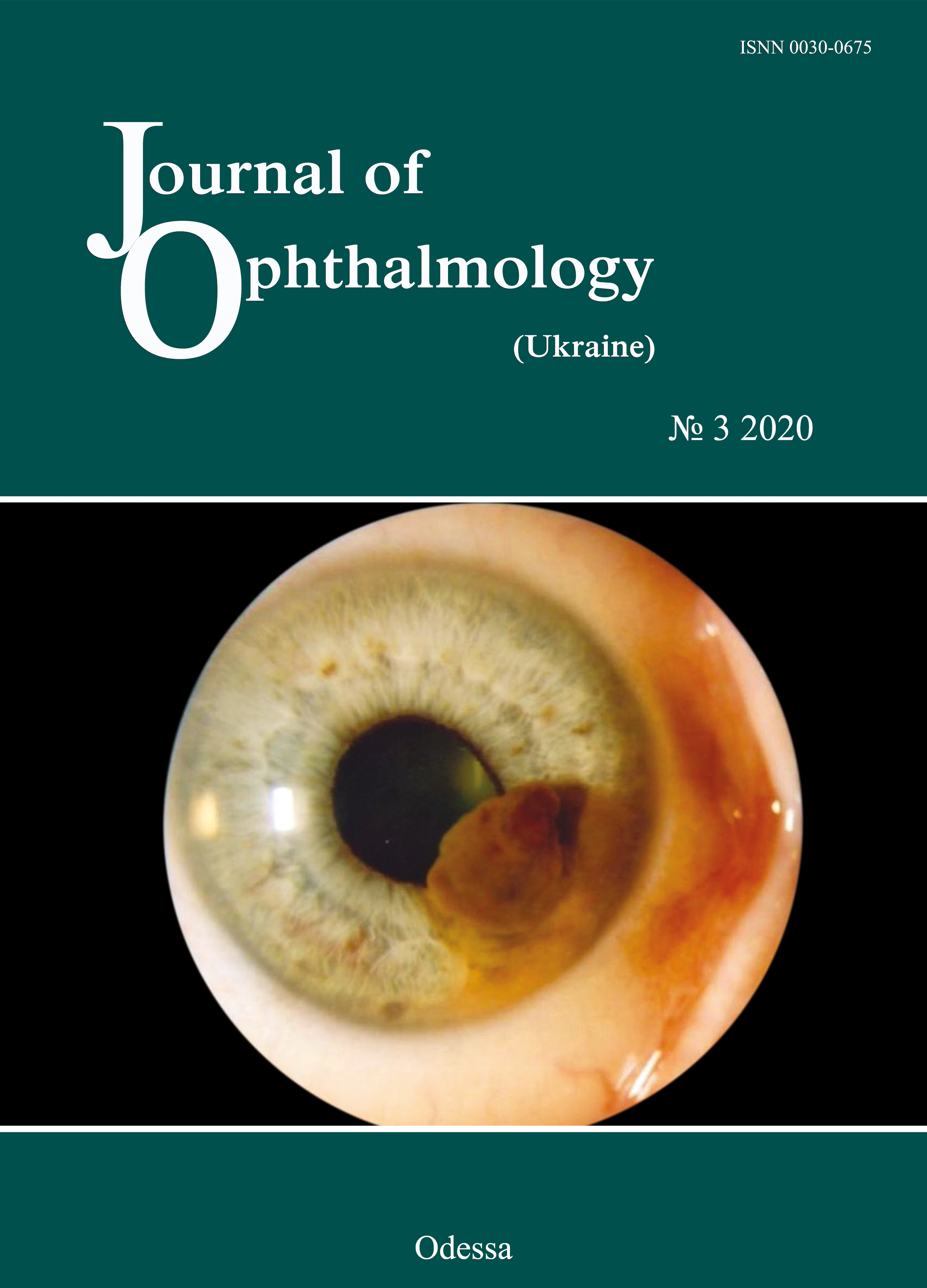Visual evoked potentials in 5 to 8-year-old children with retinopathy of prematurity
DOI:
https://doi.org/10.31288/oftalmolzh20203915Keywords:
retinopathy of prematurity, visual evoked potentialsAbstract
Background: The technique of visual evoked potentials (VEPs) is the only non-invasive method that can provide important diagnostic information regarding the functional integrity of the visual system.
Purpose: To assess the electrical visual system activity in full-term children versus those with retinopathy of prematurity (ROP) using flash and pattern VEPs.
Material and Methods: Sixty-four 5 to 8-year-old children (120 eyes) were examined, and their medical records were retrospectively reviewed and divided into three groups: Group 1 (full-term controls), 11 children (22 eyes); Group 2 (regressive ROP), 26 children (50 eyes), and Group 3 (treated with laser for type 1 pre-threshold ROP or aggressive posterior ROP), 27 children (48 eyes). Flash and pattern VEPs were recorded in all subjects.
Results: There was a significant difference (p < 0.05) in P1 latency between Group 1 and Group 3, but not between Group 1 and Group 2 or between Group 2 and Group 3. In addition, there was a significant difference (p < 0.005) in P1 amplitude between Group 1 and Group 2, and between Group 2 and Group 3, but not between Group 2 and Group 3. Moreover, there was a significant difference (p < 0.05) in P100 latency for 1-degree and 0.15-degree check sizes between Group 1 and Group 3, but not between Group 1 and Group 2 or between Group 2 and Group 3. There was a significant difference (p < 0.05) in P100 amplitude for 1-degree check size between Group 1 and Group 2, and between Group 1 and Group 3, but not between Group 2 and Group 3. Finally, there was a significant difference (p < 0.05) in P100 amplitude for 0.15-degree check size between Group 1 and Group 2, and between Group 1 and Group 3, but not between Group 2 and Group 3.
Conclusion: First, latencies and amplitudes of the P100 component of pattern VEP, and of the P1 component of the fVEP were determined for 5 to 8-year-old full-term children with the use of RETIscan (Roland Consult). Second, VEP characteristics (latencies and amplitudes of the P100 component of pattern VEP, and of the P1 component of the fVEP) for 5 to 8-year-old children who underwent timely laser photocoagulation (LPC) for ROP were found to be within the age-related norm. Finally, there was no significant difference in VEP characteristics between 5 to 8-year-old children with spontaneously regressed ROP and their peers who underwent LPC for severe ROP, which points to timeliness and efficacy of the performed LPC.
References
1.Madan A, Jan JE, Good WV. Visual development in preterm infants. Dev Med Child Neurol. 2005 Apr;47(4):276-80.https://doi.org/10.1017/S0012162205000514
2.Kanda Y. Investigation of the freely available easy-to-use software 'EZR' for medical statistics. Bone Marrow Transplant. 2013 Mar;48(3):452-8.https://doi.org/10.1038/bmt.2012.244
3.Magoon EH, Robb RM. Development of myelin in human optic nerve and tract. A light and electron microscopic study. Arch Ophthalmol. 1981 Apr;99(4):655-9.https://doi.org/10.1001/archopht.1981.03930010655011
4.Park KA, Oh SY. Retinal nerve fiber layer thickness in prematurity is correlated with stage of retinopathy of prematurity. Eye (Lond). 2015 Dec; 29(12): 1594-1602.https://doi.org/10.1038/eye.2015.166
5. Tsueineshi S, Casaer P. Effects of preterm extrauterine visuak expirience on the development of the human visual system: a flash VEP study. Dev Med Child Neurol.2000 Oct;42(10):663-8.https://doi.org/10.1017/S0012162200001225
6.Gur'ianov VG, Liakh II, Parii VD, Korotkyi OV, Chalyi OV, Chalyi KO, Tsekhmister IV. [Analysis of the results of medical studies using EZR (R-statistics) software: Biostatistics training manual]. Kyiv: Vistka; 2018. Ukrainian.
7.Kogoleva LV. [System for preventing and predicting vision impairment in retinopathy of prematurity]. [Dissertation for fulfillment of a Dr Sc (Med) degree]. Moscow: Helmholtz Research Institute of Eye Disease; 2016. Russian.
8.Koshelev DI, Galautdinov MF, Vakhmyanina AA. [The use of flash visual evoked potentials in the assessment of visual system functions]. Vesnik OGU. 2014; 12(173):181-7. Russian.
9.Safonov DL. [Diagnostic and prognostic value of evoked potentials in pediatric epileptics]. [Thesis for fulfillment of a Cand Sc (Med) degree]. Moscow: Russian Medical Academy of Post-graduate Education; 2011. Russian.
10.Faizullinа AS, Zainutdinova GKh, Ryskulova EK. [Study of the visual pathway function in cicatricial retinopathy of prematurity]. Tochka zreniia. Vostok-Zapad. 2016;3:141-6. Russian.
Downloads
Published
How to Cite
Issue
Section
License
Copyright (c) 2025 С. К. Кацан, О. Ю. Терлецкая, А. А. Адаховская

This work is licensed under a Creative Commons Attribution 4.0 International License.
This work is licensed under a Creative Commons Attribution 4.0 International (CC BY 4.0) that allows users to read, download, copy, distribute, print, search, or link to the full texts of the articles, or use them for any other lawful purpose, without asking prior permission from the publisher or the author as long as they cite the source.
COPYRIGHT NOTICE
Authors who publish in this journal agree to the following terms:
- Authors hold copyright immediately after publication of their works and retain publishing rights without any restrictions.
- The copyright commencement date complies the publication date of the issue, where the article is included in.
DEPOSIT POLICY
- Authors are permitted and encouraged to post their work online (e.g., in institutional repositories or on their website) during the editorial process, as it can lead to productive exchanges, as well as earlier and greater citation of published work.
- Authors are able to enter into separate, additional contractual arrangements for the non-exclusive distribution of the journal's published version of the work with an acknowledgement of its initial publication in this journal.
- Post-print (post-refereeing manuscript version) and publisher's PDF-version self-archiving is allowed.
- Archiving the pre-print (pre-refereeing manuscript version) not allowed.












